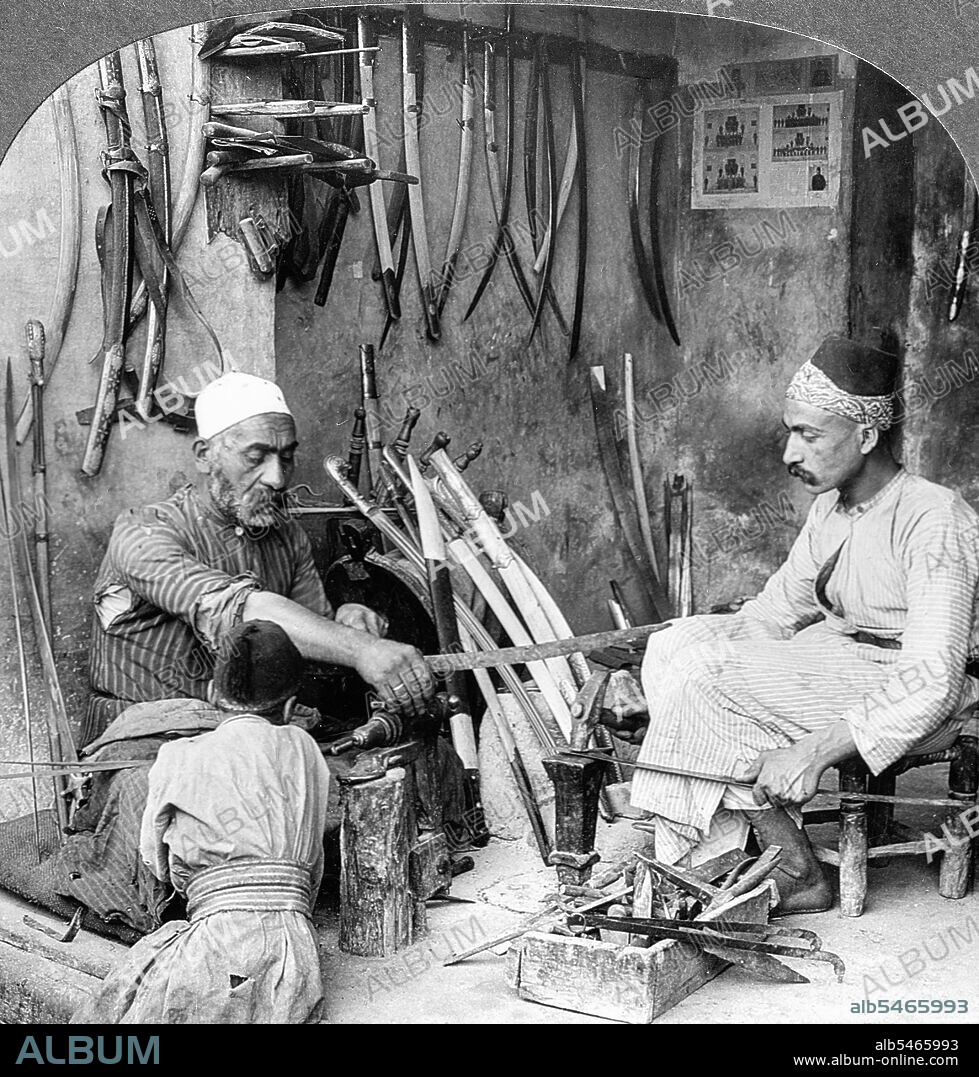alb5465993
Syria: Sword-makers in Damascus, early 20th century

|
Add to another lightbox |
|
Add to another lightbox |



Buy this image.
Select the use:

Title:
Syria: Sword-makers in Damascus, early 20th century
Caption:
Damascus steel was a term used by several Western cultures from the Medieval period onward to describe a type of steel used in swordmaking from about 300 BC to 1700 AD. These swords are characterized by distinctive patterns of banding and mottling reminiscent of flowing water. Such blades were reputed to be not only tough and resistant to shattering, but capable of being honed to a sharp and resilient edge. The original method of producing Damascus steel is not known. Due to differences in raw materials and manufacturing techniques, modern attempts to duplicate the metal have not been entirely successful. Despite this, several individuals in modern times have claimed that they have rediscovered the methods in which the original Damascus steel was produced. Today, the term is used to describe steel that mimics the appearance and performance of Damascus steel, usually that which is produced by the techniques of crucible forging or pattern welding. The reputation and history of Damascus steel has given rise to many legends, such as the ability to cut through a rifle barrel, or cut a hair falling across the blade.
Credit:
Album / Pictures From History/Universal Images Group
Releases:
Image size:
4100 x 4289 px | 50.3 MB
Print size:
34.7 x 36.3 cm | 13.7 x 14.3 in (300 dpi)
Keywords:
ARAB • ARABE • ARABIAN • ARABIC • ARABS • ARMES • ARMS • ARTISAN • ARTISANS • ASIA PICTURES • ASIA • ASIAN IMAGE • ASIAN IMAGES • ASIAN PICTURES • ASIAN • CRAFTS • CRAFTSMAN • CRAFTSMANSHIP • DAMASCENE • DAMASCUS STEEL • HISTORIA UNIVERSAL • HISTORIA • HISTORICAL IMAGES • HISTORICAL PICTURES • HISTORICAL • HISTORY IMAGES • HISTORY PICTURES • HISTORY • HISTORY. • IRON AND STEEL • IRON_AND_STEEL • STEEL INDUSTRY • STEEL • SWORD • SYRIA • SYRIAN • WEAPON • WEAPONRY • WEAPONS


 Pinterest
Pinterest Twitter
Twitter Facebook
Facebook Copy link
Copy link Email
Email
